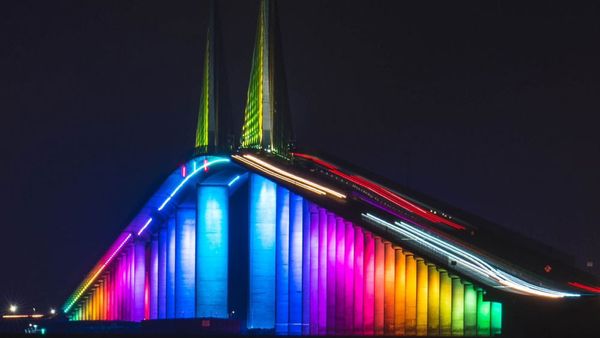June 11, 2010
Justice Dept. Memo: Prosecute Same-Sex Domestic Violence Cases
Kilian Melloy READ TIME: 3 MIN.
A Justice Department memorandum indicates that cases of same-sex domestic violence and stalking should be treated the same as instances between mixed-gender couples, the New York Times text will be the link> reported June 10.
The seven-page document examines how the Violence Against Women Act, a federal law from 1994 that provides criminal penalties for domestic violence and stalking between couples whether married or not, applies to same-sex couples. Acting assistant attorney general of the Justice Department's Office of Legal Counsel David J. Barron concluded that in cases where stalking or violent acts between couples cross state lines, the federal law applies to heterosexual and homosexual relationships alike.
"The text, relevant case law and legislative history all support the conclusion [that the provisions of the Violence Against Women Act] apply when the offender and the victim are the same sex," concluded the analysis, which was undertaken at the request of Gary Grindler, the acting deputy attorney general. The Times reported that the Human Rights Campaign's chief legislative counsel, Brian Moulton, had requested that the law be examined in terms of its applicability to violence between same-gender couples.
The nation's federal prosecutors are expected to follow the Justice Dept.'s finding.
"It's a step towards equality and recognizing that our relationships exist and are subject to the same sorts of issues that face other committed couples," Moulton told the Times. "Unfortunately, sometimes that is domestic violence and other issues that need to be dealt with through the criminal justice system."
The interpretation of the law does not conflict with another piece of federal legislation, 1996's so-called "Defense of Marriage" Act, or DOMA, which specifies that gay and lesbian families may not receive federal recognition or protections, Barron wrote, because the Violence Against Women Act does not limit its protections to married couples, and does not use gender-specific language.
"It is true that the statute is entitled the Violence Against Women Act, but other provisions of the Act make clear it applies to conduct perpetrated against male, as well as female, victims," Barron's analysis noted.
"Today's memorandum by the Department of Justice is one step forward in ensuring that LGBT people are protected by our federal domestic violence laws," the president of the HRC, Joe Solmonese, said in a release from the group, the country's largest GLBT equality lobbying organization. "Some of our families, like all Americans, experience domestic violence and those impacted by such violence should enjoy equal protections, and equal dignity, when they seek assistance from law enforcement," Solmonese added. "We thank the Department of Justice for releasing this important interpretation."
"According to a 2010 report by the National Center for Victims of Crime and the National Coalition of Anti-Violence Programs, intimate partner violence occurs in the relationships of LGBT people at about the same rate as in heterosexual relationships," the release noted. "In these situations, it is important that LGBT victims are afforded the same protections from violence as all other Americans."
The executive director of the Gay & Lesbian Anti Violence Project, Sharon Staple, told EDGE in an Aug. 3, 2009, article that although the rates of domestic violence among LGBTs is the same as in the heterosexual population, there are ways in which violence, domination, and intimidation between same-sex partners are distinct from what happens in similar mixed-gender relationships.
While "the desire of one partner to control the other" is common to both gay and straight relationships marred by violence, "the tools that a batterer might use in a same sex relationship [are different]--like threatening to out someone; things that are distinct to sexual orientation or gender identity that can be used to control. In LGBT relationships, it can be more about invoking some sort of shame as a way to make one feel small or powerless or helpless. If you are in the closet or are young and don't have a lot of resources or people you can talk to about your sexual orientation, that becomes a tool the batterer can use."
Such psychological and emotional bullying is, therefore, "one of the most prevalent forms of violence" between intimate partners of the same gender, Staple said. "Threats are often used to control behavior or denigrate a person's identity. That makes it a particularly insidious form of violence," enabling the abuser to "control over who you can see, talk to, what you can wear; even what kind of medications you can take."
Kilian Melloy serves as EDGE Media Network's Associate Arts Editor and Staff Contributor. His professional memberships include the National Lesbian & Gay Journalists Association, the Boston Online Film Critics Association, The Gay and Lesbian Entertainment Critics Association, and the Boston Theater Critics Association's Elliot Norton Awards Committee.






